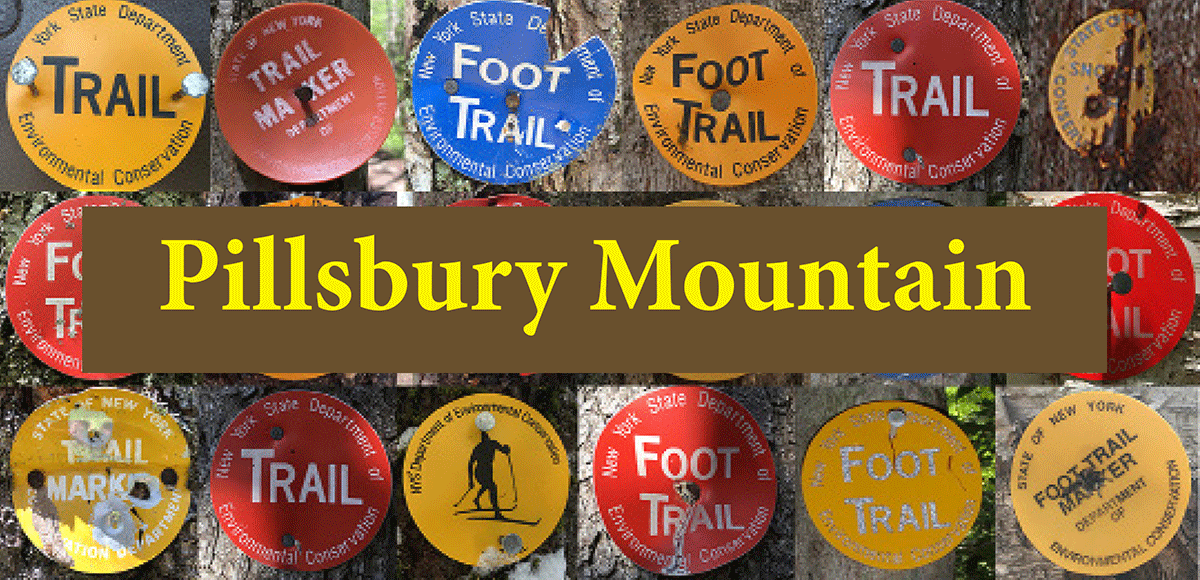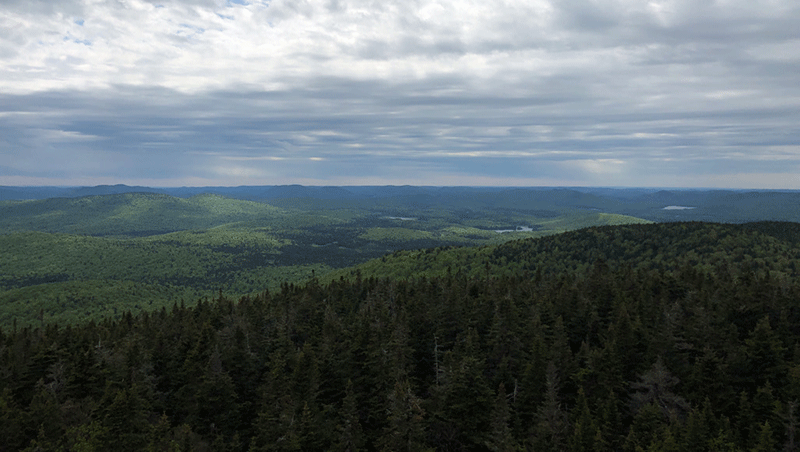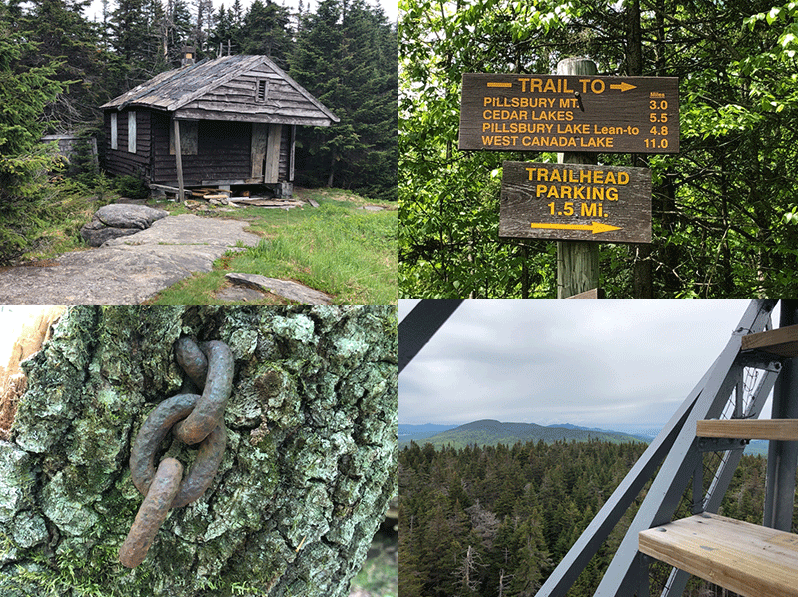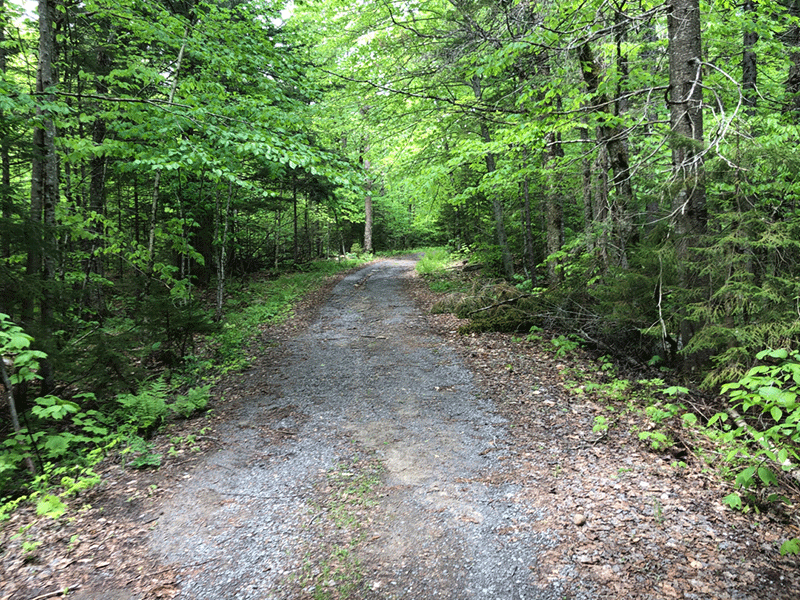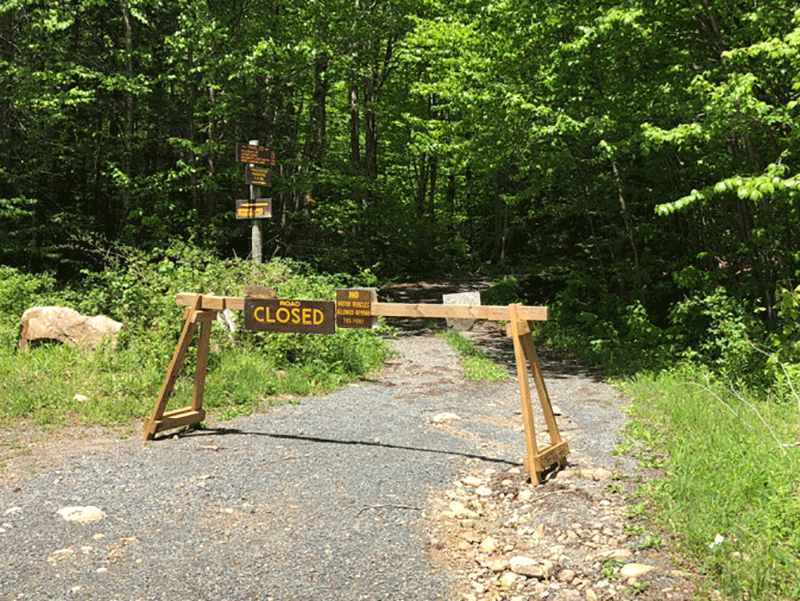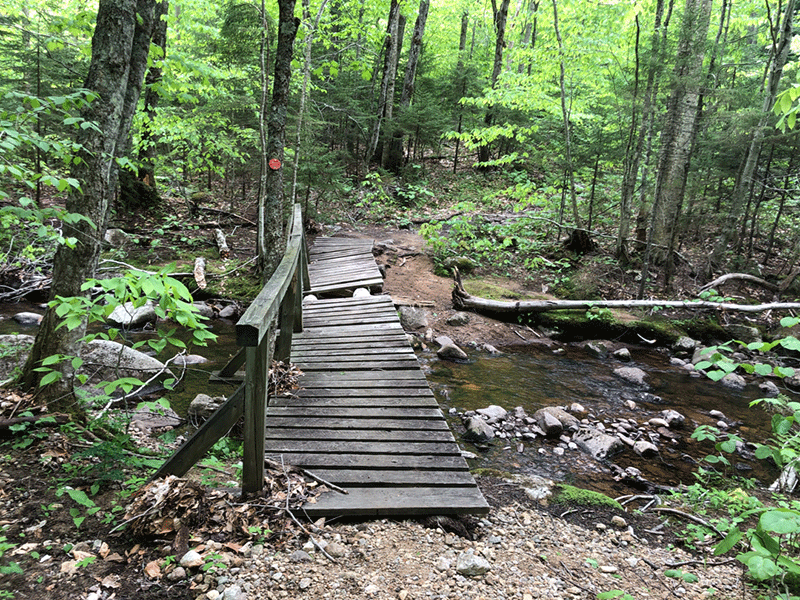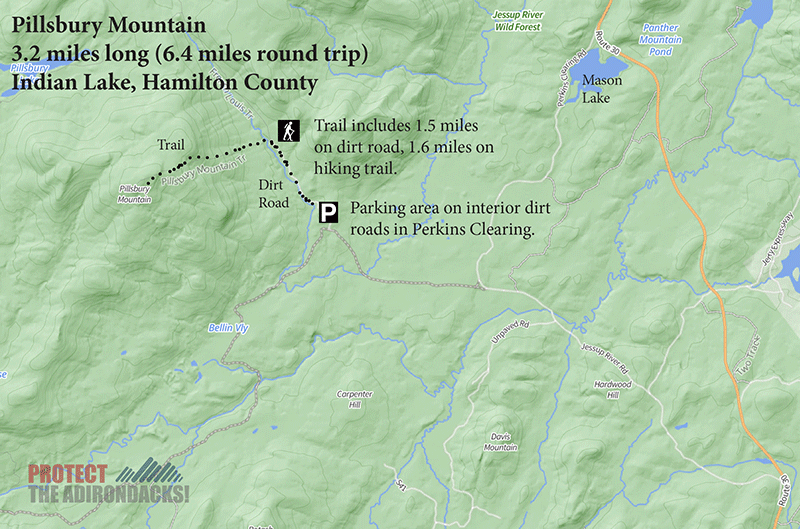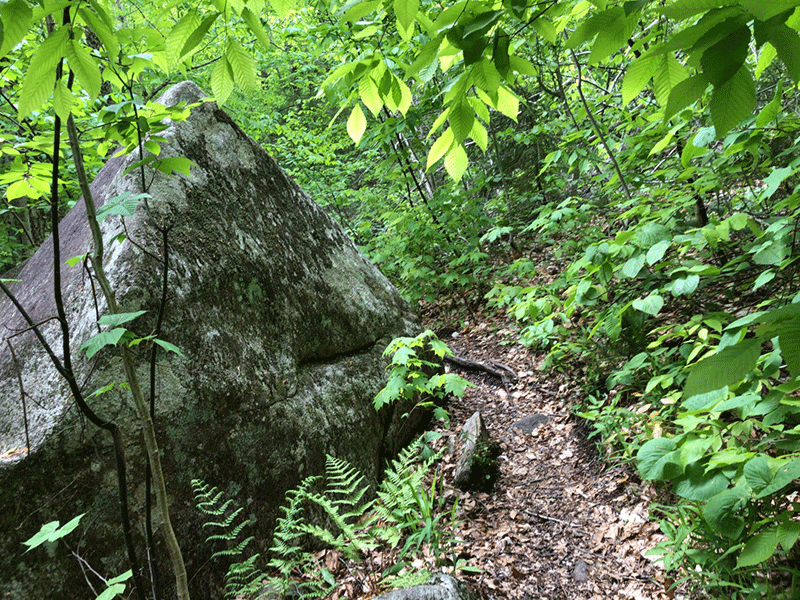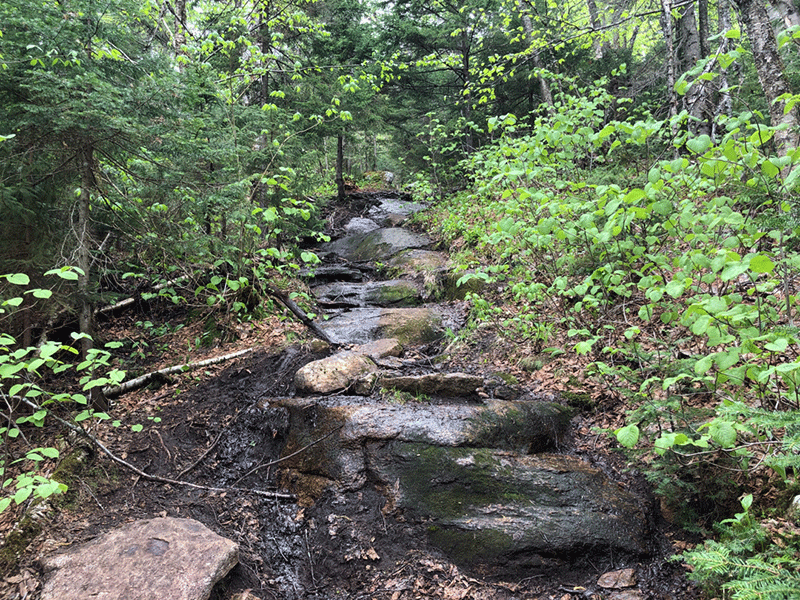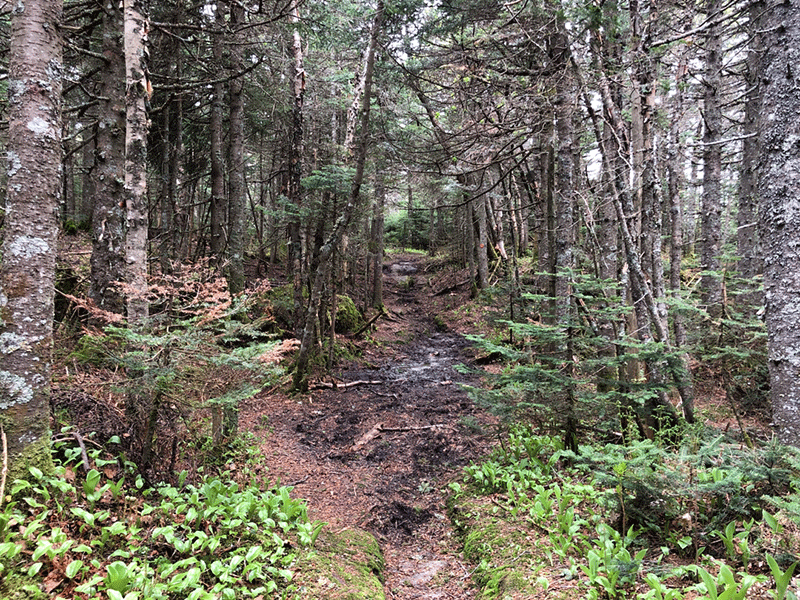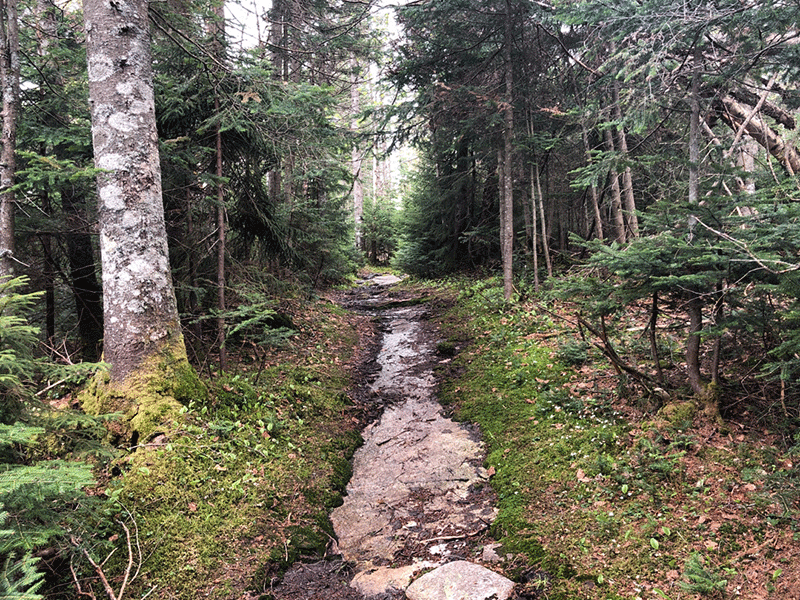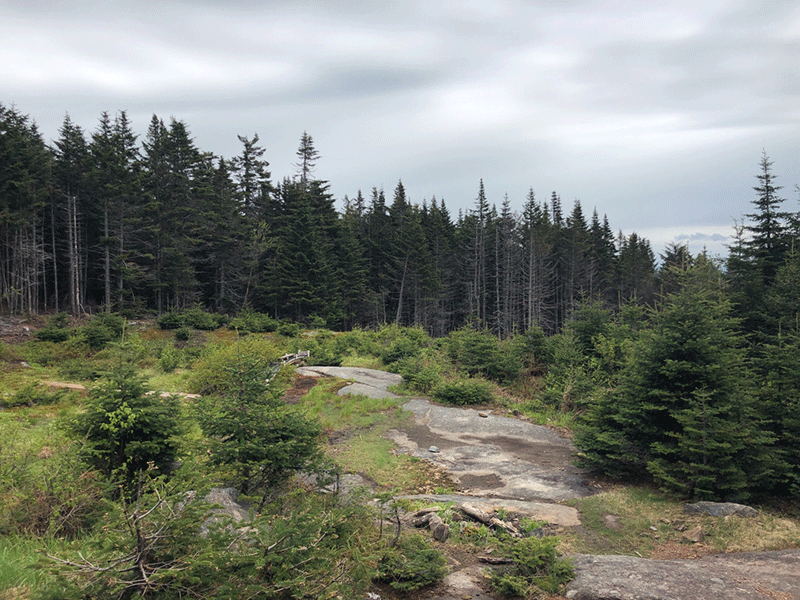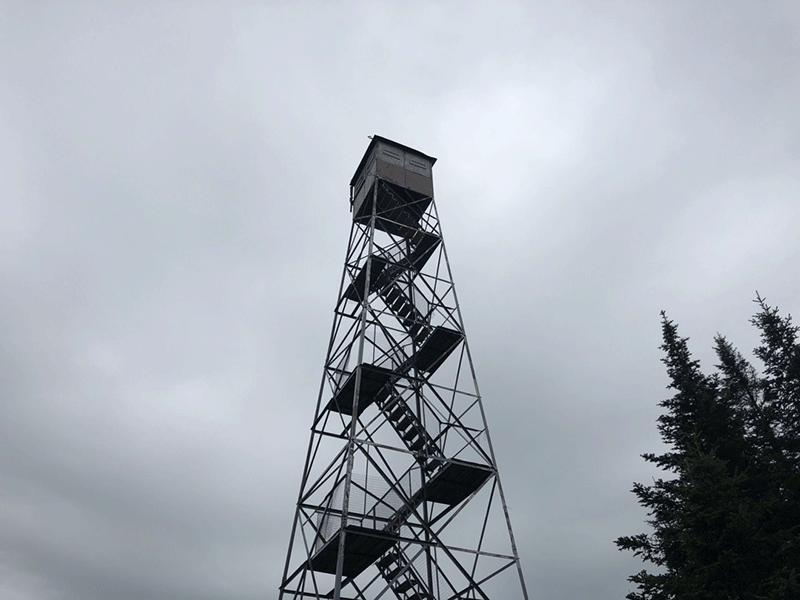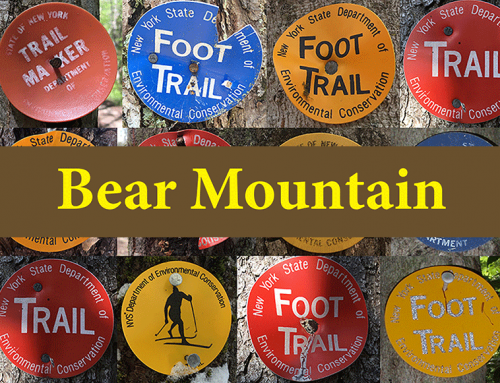Pillsbury Mountain provides a stunning panoramic view from a firetower on the summit of the mountains and lakes in the central Adirondacks.
Pillsbury Mountain
3.2 miles (6.4 miles round trip, 3.4 miles on hiking trail, 3 miles on dirt road)
Indian Lake, Hamilton County
Central Adirondack Park between Indian Lake and Speculator
Hiking
Level of Difficulty: Challenging
Hike Pillsbury Mountain
The hike up Pillsbury Mountain is a great hike in the central Adirondacks, topped by a firetower on its summit. Pillsbury Mountain is in a remote area in the central Adirondacks, accessed after a long drive on dirt roads through the Perkin’s Clearing. The trail is accessed on dirt roads through Conservation Easements lands, which are actively logged, off the west side of Route 30 between Indian Lake and Speculator. A high clearance vehicle is advisable. The trail traverses sections of mature and old growth forests in the Jessup River Wild Forest area that have been Forest Preserve since its beginning. The firetower on the summit provides a panoramic view of the central Adirondacks, with terrific views of Snowy Mountain, the Cedar Lakes in the West Canada Lake Wilderness area, and the High Peaks to the northeast. It is a hike of medium length and difficulty with big rewards.
Pillsbury Mountain is part of the Firetower Challenge. The trail is well worn and clearly marked.
The Hiking Trail up Pillsbury Mountain
In past years, this was an approximately 3.2-mile hike round trip, but washouts along the access dirt road have prevented vehicle passage and caused a new parking area to be set up. The hike is now approximately 3.2 miles each way since a long stretch of the access dirt road must be traveled on foot. The access road runs parallel to a stream and climbs intermittently over 1.5 miles to the trailhead. It is not challenging.
The hike begins with a steep downhill stretch, which culminates in a bridge crossing of the same stream that parallels the access road. The bridge is showing its age, but is still passable. The ascent up the mountain starts on the other side of the bridge. The trail is washed out and rocky with many sections that are steep and challenging. There are numerous large patches of exposed bedrock, some that are very slippery.
The trail follows the spine of the mountain for its entirety and passes through two distinct and beautiful forest types. The first leg of the ascent traverses forest of old growth hardwoods with sporadic conifers and huge glacial erratics. There are several particularly enormous yellow birches along the trail, some with diameters in excess of three feet.
The second and final leg of the ascent passes through the higher elevation mossy spruce forest that is familiar to Adirondack hikers. The main bulk of the mountain levels off before a final short climb to the summit. The trail winds through a long stretch of forest, where the spruce trees are very mossy and dense.
The Summit of Pillsbury Mountain
The summit is 3,597 feet in elevation and contains a clearing with an old falling-down Forest Ranger/fire observer cabin and the firetower. The cabin is locked. The firetower is in disrepair, with large gaps in the side fencing that a child could fall through. Be careful when climbing it. The view from the firetower provides a panoramic view of the central Adirondacks with dozens of mountains, knobs, ridges and lakes. A clear view of Snowy Mountain and the lakes of the West Canada Lake Wilderness area are particularly sharp. The High Peaks stand in the distance.
The trail out is the same as the hike in. There are no campsites along the Pillsbury Mountain trail, but there are campsites nearby at Mason Lake.
Click here to download a map and trail directions for Pillsbury Mountain.
When You Hike Make Sure to Practice “Leave No Trace” to be Prepared and to Protect the Forest Preserve
Please follow “carry in, carry out” rules for all trash and follow other Leave No Trace principles when hiking in the public Forest Preserve and other wild areas. The seven Leave No Trace principles are: 1) Plan ahead and prepare ; 2) Stay on hiking trails and camp at designated areas; 3) Dispose of human waste and trash properly; 4) Leave what you find; 5) Minimize campfires; 6) Respect wildlife; 7) Respect other hikers.
Educated hikers do not damage the environment.
Prepared hikers do not need search and rescue unless injured.
Winter Use: Access to Pillsbury Mountain is very different in the winter. The roads in the Perkins Clearing are used as snowmobile trails and are not accessible by other motor vehicles. This makes to hike to the Pillsbury Mountain trailhead many miles longer.

